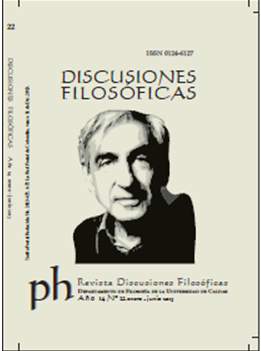Authors
Abstract
In quantum mechanics, the physical state of an electron is described by a wave function. According to the standard probability interpretation, the wave function of an electron is probability amplitude, and its modulus square gives the probability density of finding the electron in a certain position in space. In this article, we show that this central assumption of quantum mechanics may have an ontological extension. It is argued that microscopic particles such as electrons are indeed particles, but their motion is not continuous but discontinuous and random. On this view, the modulus square of the wave function not only gives the probability density of the particles being found in certain locations, but also gives the probability density of the particles being there. In other words, the wave function in quantum mechanics can be regarded as a representation of the state of random discontinuous motion of particles, and at a deeper level, it may represent the dispositional property of the particles that determines their random discontinuous motion.
References
---. “The meaning of protective measurements" Found. Phys. 1996: 117. Print.
Aharonov, Y. and L. Vaidman. “Measurement of the Schrödinger wave of a single particle”. Phys. Lett. 1993: 178-238. Print.
Bell, J. S. “Against ‘measurement’”. Miller, A. I. (ed.). Sixty-Two years of uncertainty: Historical philosophical and physics enquiries into the foundations of quantum mechanics. Berlin: Springer, 1990. Print.
Bohm, D. “A suggested interpretation of quantum theory in terms of “hidden” variables, I and II”. Phys. Rev. Jan. 1952: 166-193. Print.
Born, M. “Quantenmechanik der Stovorgänge”. Z. Phys. 1926: 803-827. Print.
Dass, N. D. H. and T. Qureshi. “Critique of protective measurements”. Phys. Rev. 1999: 2590. Print.
DeWitt, B. S. and N. Graham (eds.). The many-worlds interpretation of quantum mechanics. Princeton: Princeton University Press, 1973. Print.
Everett, H. “‘Relative state’ formulation of quantum mechanics”. Rev. Mod. Phys. Jun. 1957: 454-462. Print.
Gao, S. “Comment on “How to protect the interpretation of the wave function against protective measurements” by Jos Uffink”. Phil. Sci. Dec. 2011. Online.
---. “The wave function and quantum reality”. Khrennikov, A., Jaeger, G., Schlosshauer, M. and G. Weihs (eds.). Proceedings of the International Conference on Advances in Quantum Theory. Boston: American Institute of Physics, 2011. Print.
---. “Meaning of the wave function”. International Journal of Quantum Chemistry. Dec. 2011: 4124-4138. Print.
---. “Interpreting quantum mechanics in terms of random discontinuous motion of particles”. Phil. Sci. Feb. 2013. Online.
Lundeen, J. S. et al. “Direct measurement of the quantum wave function”. Physical Review Letters. Feb. 2012: 188-191. Print.
Pusey, M., Barrett, J. and T. Rudolph. “On the reality of the quantum state”. Nature Phys. 2012: 475-478. Online.
Schrödinger, E. “Quantizierung als Eigenwertproblem (Vierte Mitteilung)”. Ann. d. Phys. 1926: 109-139. Online.
Suarez, M. “Quantum propensities”. Studies in the History and Philosophy of Modern Physics. Jun. 2007: 418-438. Online.
Vaidman, L. “Protective measurements”. Greenberger, D., Hentschel, K. and F. Weinert (eds.). Compendium of Quantum Physics: Concepts, Experiments, History and Philosophy. Berlin: Springer-Verlag, 2009. Print.

 PDF (Español)
PDF (Español)
 FLIP
FLIP
























